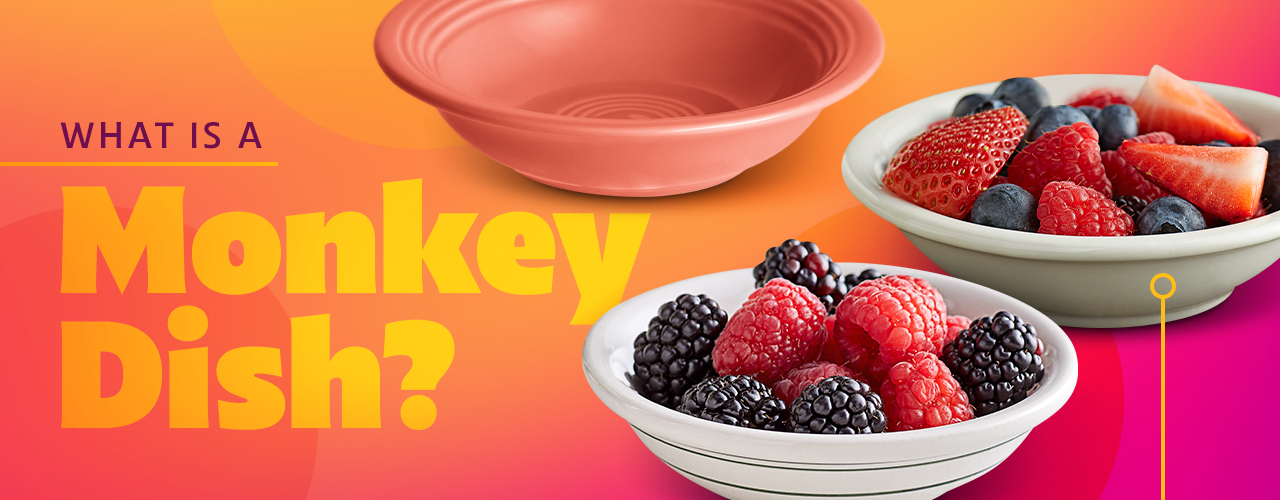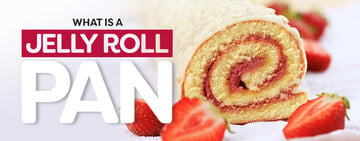Monkey dishes are small, versatile bowls with flat bottoms that are a staple in commercial foodservice. They are often used for condiments, side dishes, and garnishes to enhance plating and efficiency. Despite their playful name, monkey dishes are a practical tool for restaurants, catering, and bars looking to streamline service and elevate presentation. Below, we break down everything foodservice operators need to know about monkey dishes, from their origins to their best uses in a high-volume kitchen.
Shop All Monkey DishesMonkey Dish Meaning

The term "monkey dish" might sound whimsical, but in the foodservice industry, it refers to a specific type of small, shallow bowl designed for practical use in commercial kitchens and dining rooms. These dishes are a go-to for portioning sauces, dips, dressings, and small sides while maintaining a clean and professional presentation. Their functionality is undeniable, as they help operators control costs, reduce waste, and improve tabletop efficiency.
Monkey Dish Size
Standard monkey dishes typically range from 3 to 6 oz. in capacity, but foodservice operators can also find larger variants (up to 10 oz.) for more substantial sides or shared appetizers. Many commercial kitchens stock multiple sizes, utilizing smaller versions for individual condiments and slightly bigger ones for sides like olives, nuts, or dipping sauces.
What Is a Monkey Dish Used For?
Due to their small size and simple design, monkey dishes are ideal for a variety of uses. Whether you're using them in the kitchen or as part of a table setting, these versatile dishes are a valuable addition to any dinnerware collection. Below, we've listed some of their most common uses:
- Serving sauces and condiments that accompany a main dish
- Serving smaller dishes and appetizers like applesauce and hummus
- Holding smaller ingredients or toppings, such as fruits, nuts, and other small foods
Why Is It Called a Monkey Dish?

Although monkey dishes can be found in restaurants around the world, it’s difficult to determine exactly how they got their name. There isn't a conclusive answer as to where the name comes from, but there are many interesting stories regarding its origin. Here are three of the most popular theories that attempt to explain how monkey dishes got their unique name:
- Kept by Street Performers: Some say that the name came from organ grinders in the mid-1800s. Organ grinders were street performers who would play music using a barrel organ. It was common for organ grinders to have pet monkeys that would dance to the music and collect tips from people passing by. Some people theorize that these dishes are called "monkey dishes" because they resemble the bowls that the monkeys would use to collect money.
- Made From Monkey Bones: Another theory states that monkey dishes were originally made from the skulls of monkeys, which gave the pieces their name.
- Used to Test for Poison: Hundreds of years ago, kings and queens would have monkeys test their food to see if it was poisoned. A piece of each food would be given to the monkey in a small bowl to taste test, hence the name.
Monkey Dish vs Ramekin

While monkey dishes and ramekins may seem similar at first glance, they serve distinct roles in a professional kitchen. Ramekins are typically deeper and more cylindrical, making them ideal for baking, souffles, or holding thicker dips. In contrast, monkey dishes prioritize a shallow, wide design perfect for easy access and quick service.
- Shape and Depth: Monkey dishes are shallow and wide, while ramekins are deeper with straight or slightly tapered sides.
- Primary Uses: Monkey dishes excel for condiments, garnishes, and small sides. Ramekins are better for baking, custards, or thick dips.
- Oven Safety: Ramekins can be used in the oven, but monkey dishes are meant only for serving food.
- Storage: Monkey dishes nest efficiently for storage, while ramekins’ depth can limit space-saving stacking.
Monkey dishes may be small, but their impact on foodservice operations is substantial. From portion control to elevated plating, restaurants, bars, and catering businesses can enhance efficiency while delivering a polished dining experience with monkey dishes. Whether you're stocking up on essentials or refining your tabletop presentation, these versatile tools prove that sometimes, the smallest details make the biggest difference.








